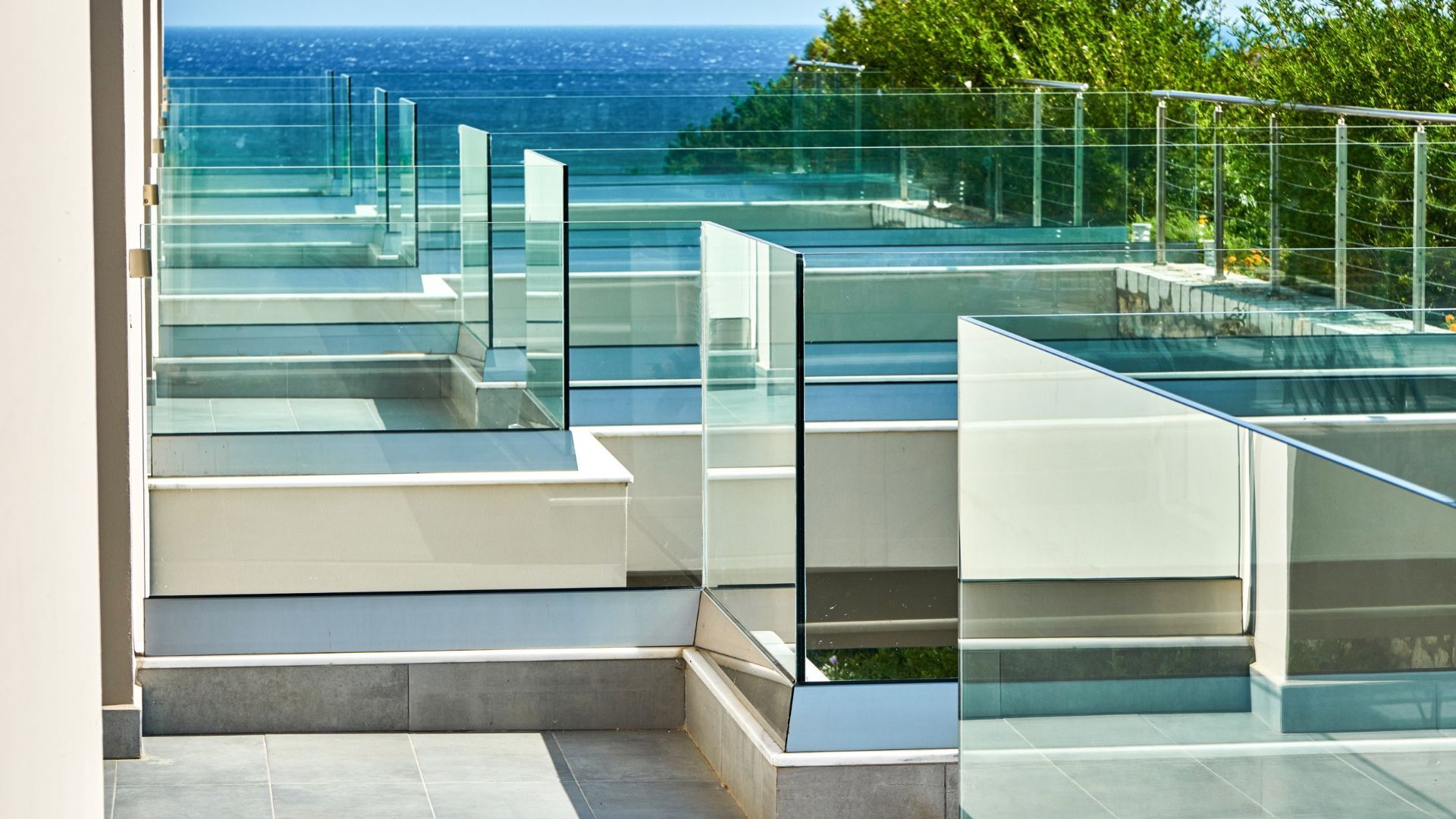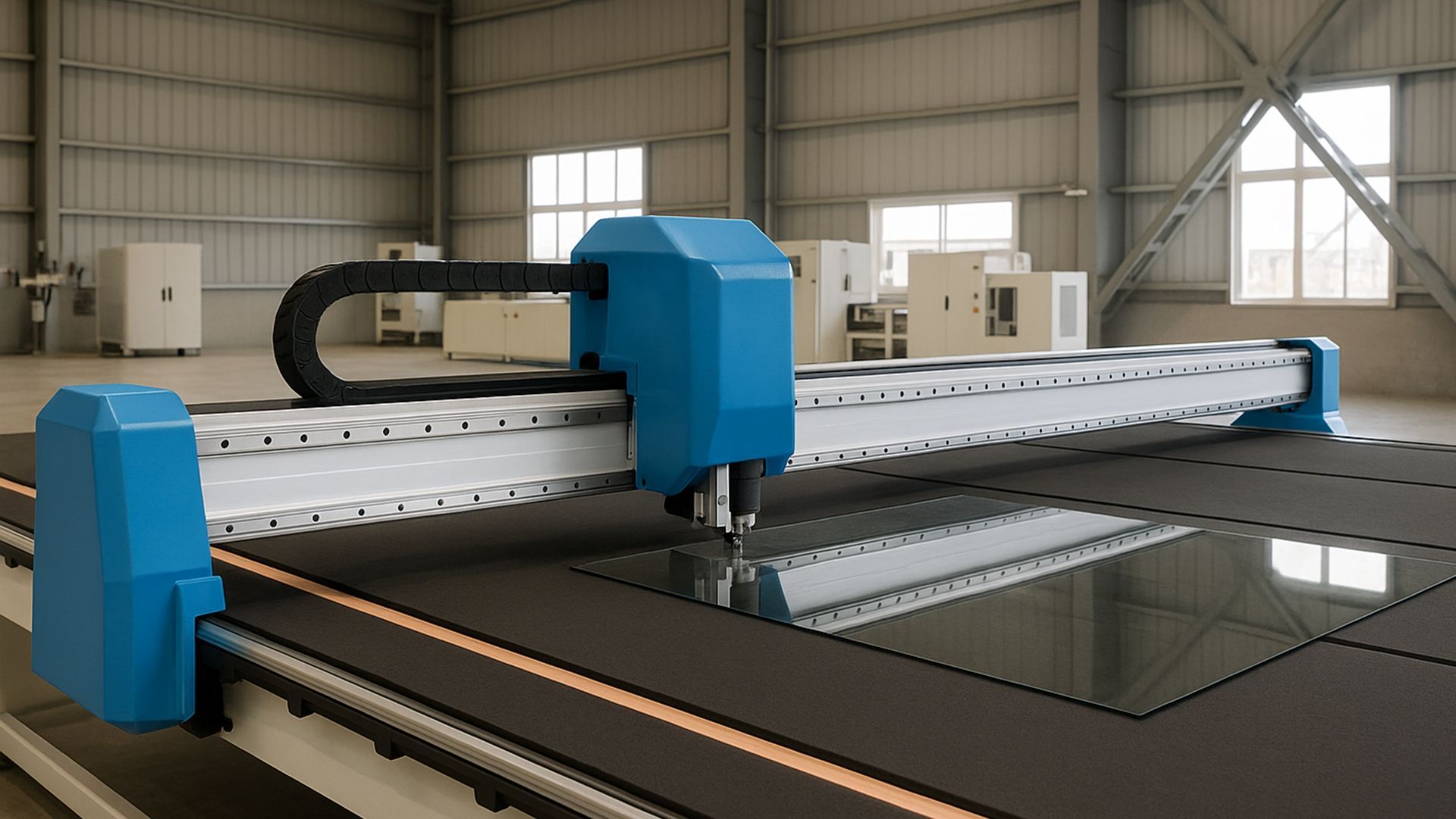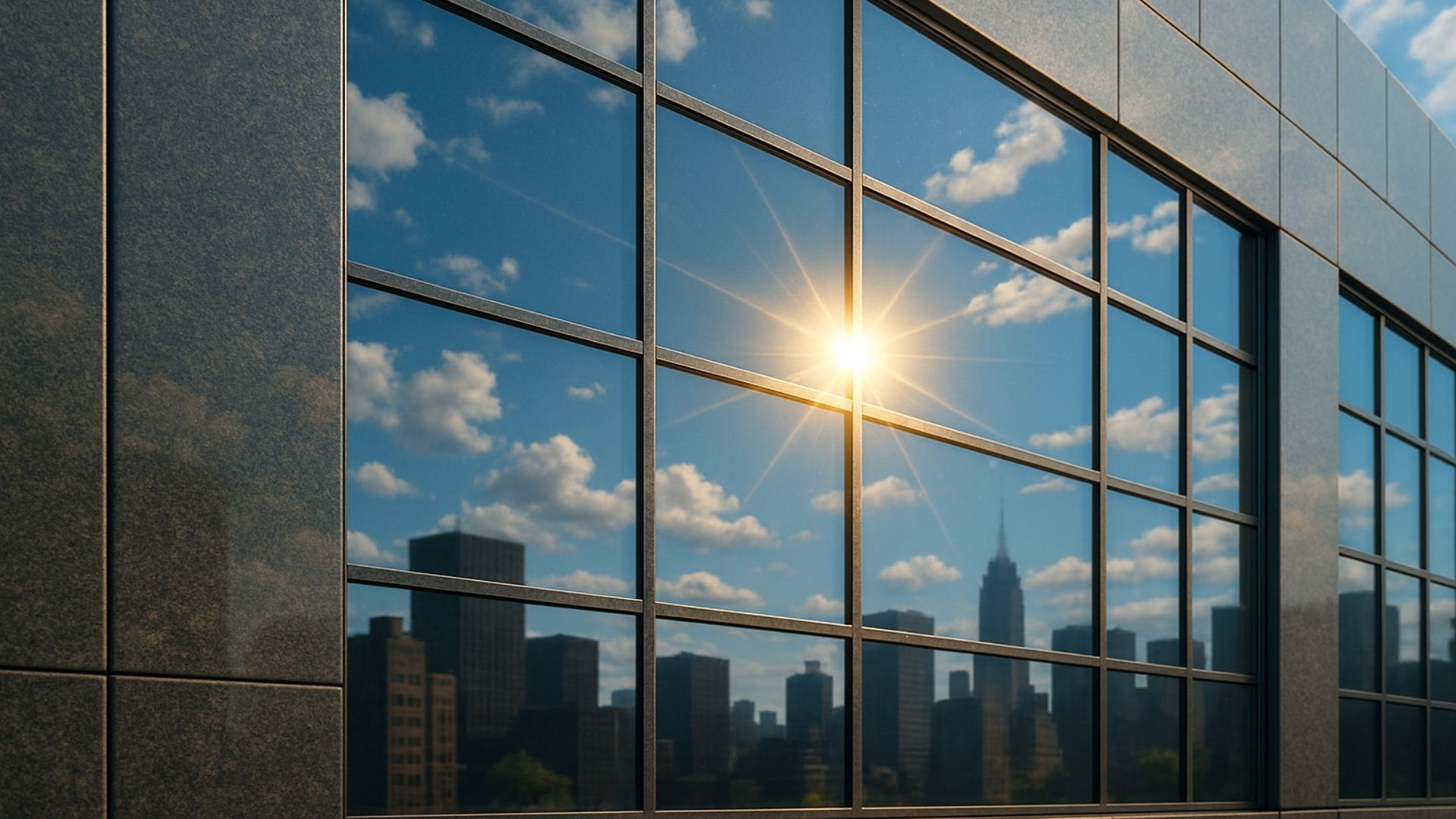A guide to installing glass on high-rise buildings
Share this blog:
Installing glass on large and high-rise buildings presents unique challenges. Join us as we consider some of the regulatory and safety issues involved.
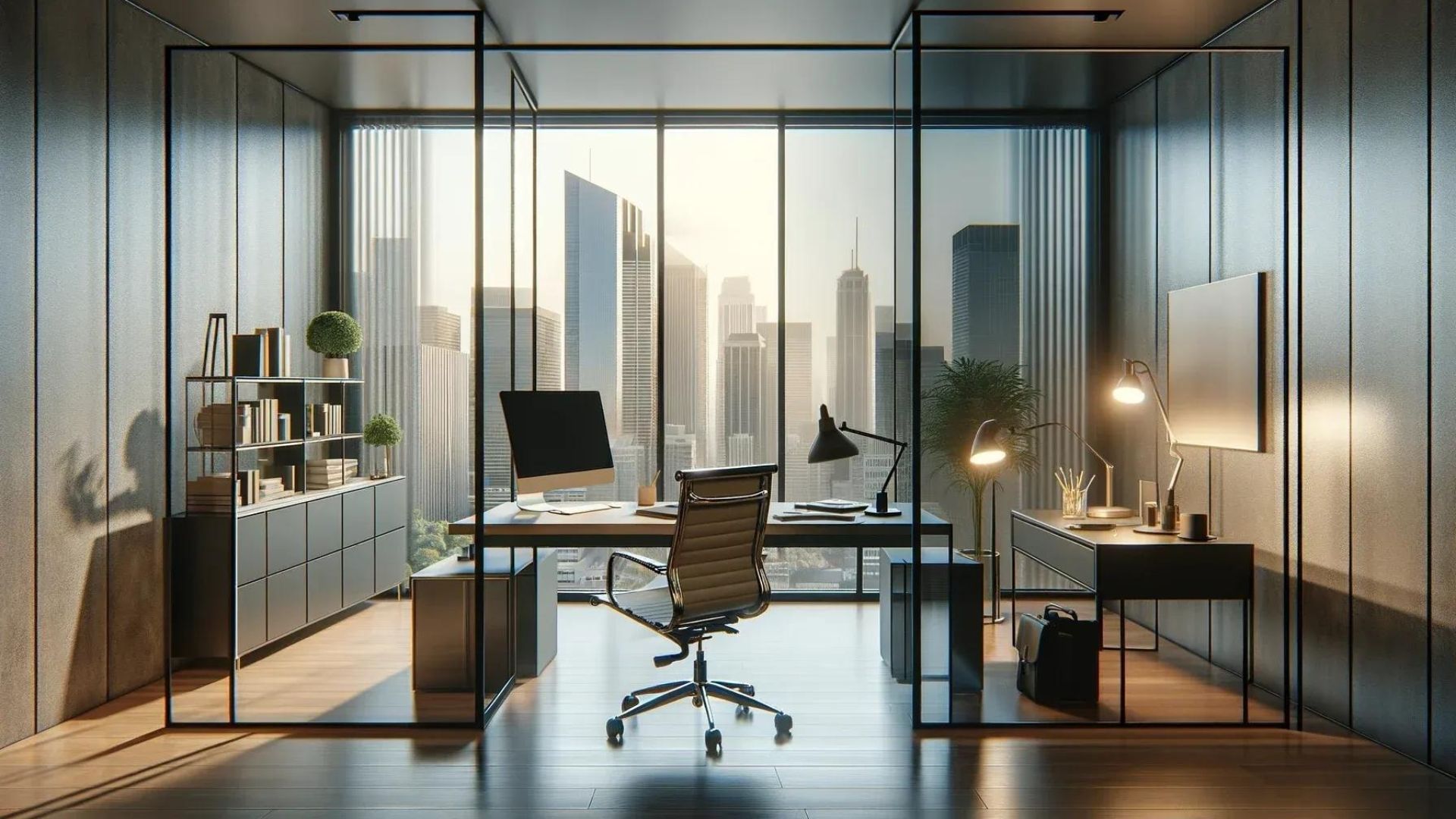
Installing and replacing glass in high-rise buildings is a difficult job. In fact, we'd go so far as to say that it's one of the most difficult in the world of architectural glazing.
It's not just that the glass is hard to reach. It's that the higher up you go, the faster the wind, the colder the air and the hotter the sun. This means that the glass used has to be even more resistant to the elements than its common-or-garden equivalents.
In this article, we take a look at some of the most common issues surrounding glass installation in large buildings. We consider the risks and challenges involved, the most common reasons why it needs replacing and the types of materials needed.
But before we go any further, it's important to make clear that nothing in this article constitutes official advice. Building regulations are readily available and should be consulted before embarking on any high-rise installation project.
With that out of the way, we hope this article gives you some insight into one of the lesser-explored sides of commercial glass installation.
What are the risks and challenges involved?
All kinds of glazing involve safety risks. It's the main reason why the glass industry is so tightly regulated. But glazing large buildings is especially risky if only because of the distance from the ground. Installers should be head to toe in protective gear.
Once installed, the glass has more potential to cause harm than in other settings. That's why the glass has to be thicker and more robust than most kinds of domestic glass. Cracking is unlikely, but it can occur – so when it does, the glass has to stay in its frame and not fall.
What kind of glass is used?
Glass that's used on large buildings will almost always be double-glazed. The precise thickness of the glass (and the gap between the panes) will depend on several factors. These include location, height, size and the nature of the building itself.
The glass will be heavier than in a domestic setting in order to withstand environmental pressures. It's one of the reasons why installation requires more time, effort and manpower than in other contexts.
When do windows in large buildings need replacing?
Glass installed in large or high-rise buildings is like any other kind of glass in that it's vulnerable to the weather, maintenance accidents and poor glass hygiene. However, the size and height of the windows can exacerbate these three factors.
The higher up you go, the more intense the wind, rain and sun can be. This means that weather damage can be more deleterious than on your average domestic property.
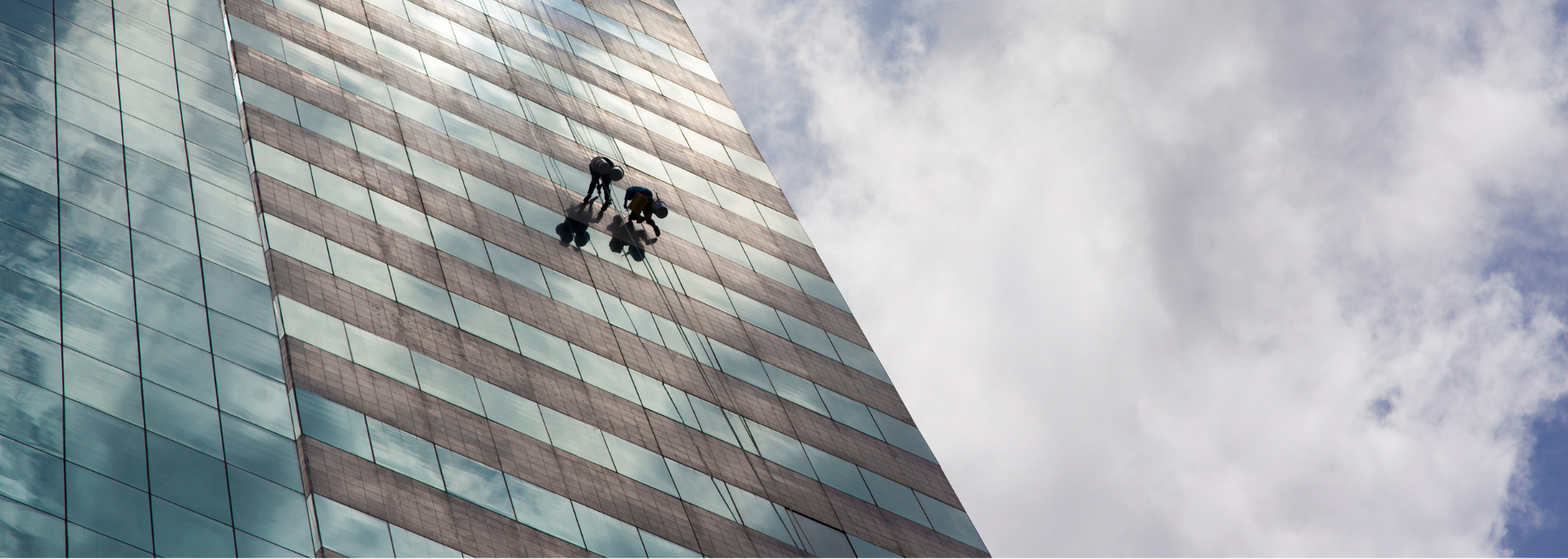
Similarly, poor window hygiene can affect any pane of glass, whether it's at street level or looming over the city. Dirt and debris can cause windows to crack. Because the windows on high rises and other large buildings are difficult to access, hygiene can be neglected, increasing the chances of damage.
Finally, there's a factor that's common to all types of glazing: slowness to act. If a window on a large building is damaged, it needs to be addressed straight away. Like any other kind of hygiene, the longer you leave it, the harder it is to sort out.
The importance of inspections
Because glass in high places is so hard – and time-consuming – to reach, it's essential to catch problems sooner rather than later. The best way to achieve this is via regular (and thorough) inspections.
Your glass inspections could be a biannual or seasonal occurrence – but they need to be regular, scheduled and audited properly to ensure that nothing slips through the cracks.
How are windows replaced on large buildings?
At first glance, this question isn't unlike "How does the snowplough driver get to work?" It isn't immediately obvious how you would lift glass from the side of a tall building.
The answer, perhaps surprisingly, is "glass suction cups". A glass suction cup is a device that glomps onto a windowpane and can then remove it from its frame.
Of course, the cup needs to be handled by installers, who get to the window by forklift, cherry picker or crane.
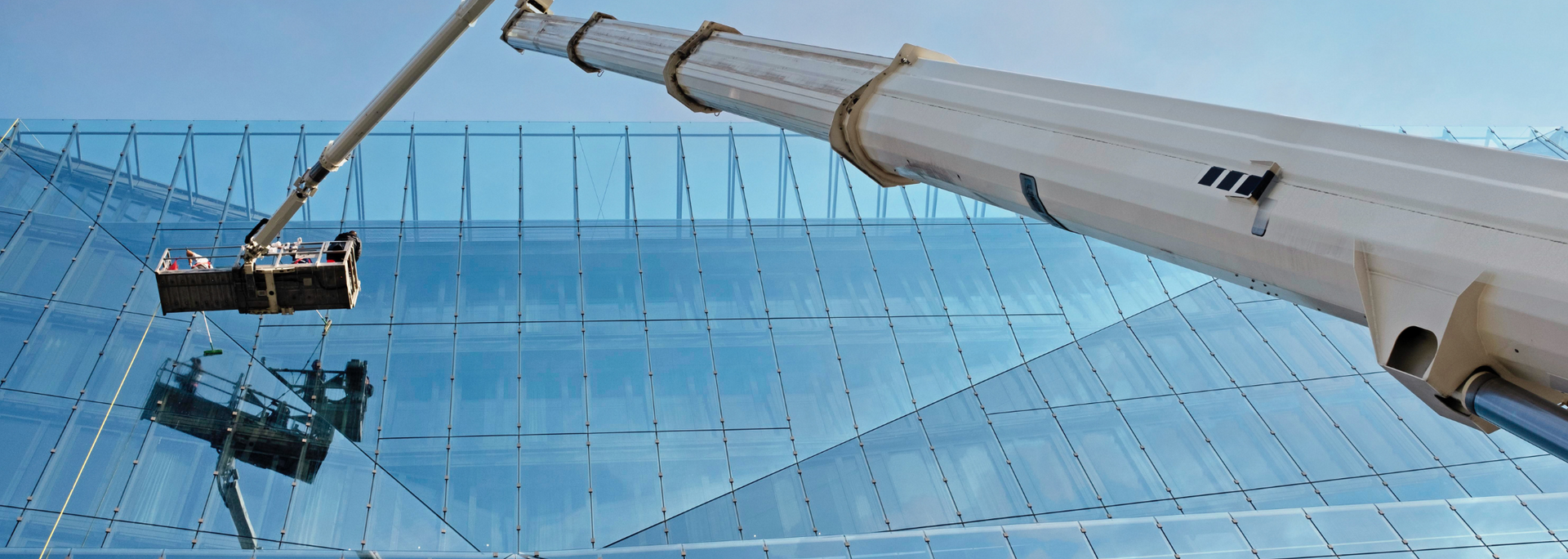
If possible, the glass panel that needs replacing will be fed into the building. However, this isn't always possible, and sometimes it has to be brought down by crane. The suction cup is then used to place the new pane of glass in the old frame.
It's not an easy process, which is why it's so important to keep an eye on the glass and maintain it well.
What regulations cover glass on large buildings?
In the UK, the use of safety glass in architectural glazing is mostly covered by British Standard BS 6262. This is a national standard that covers all types of glazing in "critical locations".
It's important to follow building regulations closely when carrying out architectural glazing projects. If you don't, you could face a fine or, in a worst-case scenario, your building could be demolished.
Why choose ToughGlaze?
At ToughGlaze, we stock a wide range of safety glass for use in architectural glazing. All our products are properly certified, meaning you and your clients can rest assured that the glass is up to the job.
As well as this, we're the proud possessor of state-of-the-art facilities where we cut, process and ship our products. This means you can expect a fast turnaround with no sacrifice to thoroughness – and the convenience that comes from working with a one-stop shop.
So, if you're looking for high-quality
architectural glass for installation in a large building, don't hesitate to
get in touch. We'd love to help you get the materials you need.


